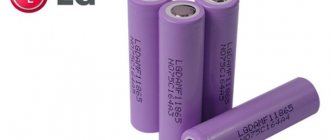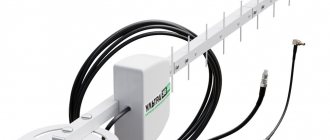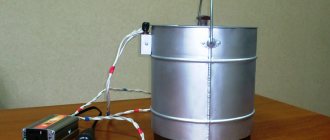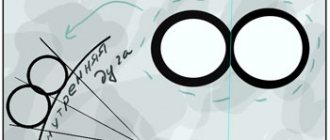Modern crafts involve the use of an auxiliary material such as epoxy resin, which you can make yourself. The material exhibits its unique properties when combined with a hardener. So how to make epoxy resin at home?
- How to dilute epoxy resin with hardener - proportions
- How to check the quality of the resulting composition
How epoxy resin works
The solution belongs to the two-component category, for the preparation of which two ingredients are used that are mixed together. We are talking about resin and hardener. Based on the chemical characteristics of the elements used, they both belong to polymers. Their molecular weight is small. The joining process involves a polymerization process. This means that small particles combine to form larger molecules.
The entire solution is subject to the process, so after hardening, the resin is a single element. Epoxy is a mass-forming element. The hardener is responsible for starting the polymerization process. Both elements should not be mixed with each other before preparing the solution. This process is irreversible. As the temperature increases, the process accelerates. Increasing the hardener in the solution will also give a similar result. To achieve the opposite effect, the temperature is lowered.
Precautions when working with resin
The chemical composition of epoxy resin is specific and implies the presence of toxins. However, the resin itself has amazing properties, since after hardening the product turns out to be absolutely harmless to others.
When working with the composition, you should use protective gloves, and the room chosen for work should be thoroughly ventilated.
If the composition gets on the skin, it should be washed off with a soap solution and a sponge. You should use a respirator during the grinding process.
Jewelry and souvenirs
The specificity of wood blanks does not allow them to be used for decorating epoxy bracelets and rings. The exception is small wooden products, but these are very rare. But in the manufacture of pendants, pendants and souvenirs, wood is both a decor, a connecting element, and a filler. Wood is used in any form, from plywood to cross-cut. The work of a craftsman involves the need for complex woodworking tools. Gradually, a hobby develops into a profession. Those craftsmen who share their experience on the Internet have been working with resin professionally for a long time, and their products are in demand.
To prepare a cross cut, it is best to take not a trunk, but a tree branch. The pattern will also be visible on this cut. To highlight it, the surface is treated with stain. The difficulty lies in cutting an element of a suitable shape and size from the workpiece. After priming comes pouring. The resulting pendant doesn’t even require any special fittings. A hole for a cord is drilled in it and you get a beautiful souvenir.
There are many ideas for creating jewelry from longitudinal cuts.
The shape of the product depends on the existing mold. Most often, keychains are made from epoxy and wood. The unique properties of the resin allow it to be processed after curing. By grinding, the thickness of the product is reduced, turning it into a pendant that can be worn on the body.
How to work with epoxy resin
In order to frame a hand-made craft, you should mix both components - epoxy and hardener - in the correct proportion (it is given in the instructions). Afterwards the composition is thoroughly mixed.
A disposable syringe will help you quickly and without noticeable damage measure the amount of hardener and resin. Epoxy resin is poured into silicone molds (carbuchons can also be used). The material will completely harden within 24 hours if the temperature is maintained at +25°C - +50°C.
Applying epoxy resin to a table
If a non-dried product is left in a cool room, a specific coating will form on the surface. To achieve the maximum permissible strength indicator, the product is then heated to a temperature of 100°C. The reaction between the components that has begun is irreversible. It is not possible to reuse frozen resin, so it must be used after first calculating the exact amount.
Table treated with epoxy resin
Epoxy resin is used to bond or create a protective layer between non-porous materials such as porcelain, ceramics, earthenware, dense woods and metals. Ultimately, the composition can turn out to be both elastic and incredibly hard. The resulting composition is applied in a thin layer to the work surface, then the two separate elements are compressed and glued together. Remaining glue is carefully removed. It is possible to add auxiliary components such as aluminum powder.
How to dilute epoxy resin with hardener - proportions
Different percentages of the ratio of hardener and resin will make it possible to obtain a wide variety of compositions. Once the reaction has started, it is considered irreversible. The resulting resin cannot be melted, dissolved or reused.
The standard ratio of hardener to epoxy resin is 1:10. That is, for 1 part hardener there are 10 parts resin. An overdose of hardener is allowed, up to 1:5.
The quality indicator is directly affected by the ratio of hardener and resin:
| Excess hardener will appear on the surface of the product after it has dried. | If you do not add enough hardener, the composition will be too sticky due to the resin that has not reacted |
You can learn more about the mixing process and proportions from the video:
Volume of resin, shape of the vessel and their effect on heating the mixture
The mixture of components A and B, that is, the resin compound and the hardener, self-heats to one degree or another when mixed. Moreover, the degree of heating can be such that the composition spontaneously ignites or smokes, or, in any case, boils, quickly hardening before our eyes, which will make its use absolutely impossible.
Without exception, all epoxy resins, regardless of whether they are polymerized hot or cold, work as thermosetting compounds, that is, the polymerization reaction with gradual thickening and then hardening of the mixture occurs with a large release of heat, that is, it is classically exothermic. In this case, the shape of the vessel in which components A and B are diluted has a huge impact on the rate of temperature increase and its magnitude, as it may seem incredible. The closer it is to cubic or, especially, spherical, the faster and stronger the heating.
Useful to know > What is the difference between epoxy resin and epoxy glue, comparison of properties and composition
Full analogy with nuclear fissile materials, the critical mass for plutonium and uranium-235 is about two kilograms. But a fission chain reaction with this mass is only possible if this metal is given the shape of a ball. Roll it into a pancake 5 mm thick, and a plutonium or uranium casting can be made up to 10 kg, without nuclear fission reactions occurring.
Something similar happens with epoxy, only not at the physical level, which affects the very foundations of matter, but at a lower, chemical level. Just as in plutonium free neutrons increase their concentration with equal weight, but in a more compact volume, which causes a chain reaction, so thermal quanta in the mass of epoxy, which is close in shape to cubic or spherical in its liquid state and mixed with a hardener, also increase their concentration per unit volume and initiate rapid self-heating. And of course, the output of energy, monstrous in its volume intranuclear or simply thermal in the case of a chemical reaction, is incomparable.
If you need to dilute a lot of resin at once in order to fill large surfaces, you should simply use a container with a wide bottom and low sides, that is, in a shape that is far from a cube or ball. The large surface of contact with air will serve as a kind of cooling radiator. This technique is used if the floor area to be filled requires the simultaneous dilution of a large volume of epoxy resin. You can also additionally place such a vessel in a larger area and volume, but partially filled with ice water or even ice.
Another way to prevent boiling and premature curing of the epoxy mixture is to do discrete, intermittent pours. They poured a 1 cm layer, waited for it to harden completely, only after that a new portion of resin was diluted and the next one was poured, and so on until the casting of the required volume and thickness was obtained. True, this method requires a particularly clean workplace, the absence of dirt and dust, and it is also necessary to prevent moisture, and especially water, from getting into the workpieces.
How to make epoxy resin with your own hands
When making epoxy resin, it is customary to use clean and dry containers and tools. The compound uses different amounts of ingredients, depending on the manufacturer. The use of domestic raw materials implies a proportion of 10:1, where ten parts of resin are taken and one part of the hardener is added. Depending on the manufacturer's brand, the indicated proportion may differ. Before you begin kneading a large volume of material, you should knead a small (test) amount.
The manufacturing instructions will look like this:
| To begin with, all components used must be carefully measured. A medical syringe is best suited for these purposes, after which the ingredients are placed in different containers | |
| Mixing is carried out alternately until a homogeneous mass is obtained. You can use wooden sticks for stirring. | |
| The composition should be heated to a temperature of +50°C - 65°C. | |
| After reaching a certain temperature, a hardener is added to the epoxy resin. | |
| The finished composition can be used for one and a half hours. |
You can also watch several master classes on working with epoxy resin to understand how to work with it:
How to check the quality of the resulting composition
In order to check the quality of the resulting composition, you need to take a little of the finished mixture into a small spoon. You should use a metal product - the composition is heated in it until it boils.
After cooling, the quality of the composition is visible to the naked eye. If the material remains viscous in the spoon and looks more like rubber, then little hardener was added to the composition. The option of purchasing a low-quality product should also not be ignored. If the hardening went well and the result is excellent, then you can use the product for its intended purpose.
Beautiful examples
A small almond-shaped epoxy resin pendant with a small dried flower will look unusual. However, you should not add other decorative details inside the material. The pendant can be placed in a gold or silver frame if desired. Such an accessory will look neat, simple, but at the same time beautiful.
Another interesting and beautiful option would be a pendant made in the shape of various animals, flowers, leaves, stars and hearts. To make such a model yourself, you need to select suitable small forms.
As a decoration for the product you can:
- use dried plant elements or small colorful feathers,
- combine several types of different decor at once,
- make a pendant with both a chain and a cord,
- secure the piece in a gold or silver frame.
To learn how to make a pendant from epoxy resin, see the following video.
Popular posts
- Types of trunks and methods of attaching them to an ATV When your feet are warm: the floor in the bathhouse with your own hands Making tea bags with your own hands DIY Easter baskets from scrap materials How to make a lawn: types, preparation, planting, care Do-it-yourself surprise box: master class with photo Do-it-yourself sausage stuffer Do-it-yourself drain from sewer pipes
How to make colored epoxy resin
Epoxycone, a type of special paint for epoxy resin, is excellent as such pigments. Dry colors used for enamel, alcohol stains, aniline dyes, toner from a printer and paint from fountain pens are also suitable. The use of stained glass paints is allowed, but only water-based. Green color can be obtained using pharmaceutical brilliant green. Additives will also affect the consumption of the composition in addition to coloring it a certain color. The colors available are:
- white;
- dark gray;
- black.
In order to color epoxy resin, a variety of pigment additives can be used. However, they should be added only in dry form, or in combination with a nitro solvent.
What will you need?
To create this accessory from such material, we will need the following elements.
- Epoxy resin. During preparation, it will need to be mixed with a special hardener. This will allow you to make the mixture the right consistency. At the same time, you should ensure that even small air bubbles do not form during mixing.
- Form. It will be needed in order to pour the material there and give the product the required shape. Often cylindrical or round parts are taken.
- Filler for pendant. In this case, this element will act as a decorative decoration. Often shiny multi-colored beads, beads, dried flowers and leaves, feathers, and small wood shavings are taken.
When purchasing resin, be sure to pay attention to what direction it is in. To create jewelry, it is worth choosing just such a variety that is designed for doing creative work with your own hands. It will have the required density.
Epoxy resin curing stages
The epoxy composition goes through several stages of hardening . Conventionally, they can be divided into the following stages:
- At the very beginning, the consistency is liquid, it will drain well, which is very convenient at the pouring stage. Thus, the composition will get into even the smallest cracks.
- Over time, the mixture will become thicker. It can only be used for filling forms that do not have a pronounced relief.
- The third stage is the most difficult to work with. The density of the composition will resemble honey, which will allow it to be used only for connecting large elements together.
- Afterwards, the mixture becomes very thick, which will make it impossible to separate even a small piece from the total mass.
- The penultimate stage is often called the rubber stage, since the composition no longer sticks to your hands, after which it can be crushed and bent at your discretion. However, the resulting figure needs to be secured. Otherwise, the material will return to its original form.
- The very last stage of hardening implies a finished product, which is extremely difficult to even scratch. It will tactilely resemble a plastic mold.
Additives for epoxy resin
For the production of small quantities of putty, purchasing specialized fillers is impractical.
You can use improvised materials as a replacement. These include:
- Wooden sawdust of different fractions. A sandpaper attachment for an angle grinder will help prepare the required amount of material. Once hardened, it is extremely difficult to process.
- Remains of rubber. Used only as a last resort.
- Asbestos. This filler belongs to the category of fibrous, which gives it reinforcing properties. The adhesive seam will be much stronger. It is permissible to work with such material only in a protective suit and a respirator, as it is a strong carcinogen.
- Finely chopped fiberglass. In this way an excellent thixotropic filler can be obtained. It is very problematic to prepare in large volumes, and the material itself causes severe skin itching and irritation. An alternative is carbon fiber and carbon fiber.
- Baby powder - talc. However, before use, it is recommended to calcine the material in order to remove excess moisture. When frozen, it is easy to process, which is an undeniable advantage.
- Rye or wheat flour. It is easy to sand and used for making a wide variety of crafts.
- Sand. Fine and sieved material is suitable as filler. Makes the composition incredibly hard. As a result, the product turns out to be incredibly heavy, which should also be taken into account.
- Any cement is suitable. Once dry, the material becomes incredibly durable.
- Alabaster or plaster. The total weight will be high, which should be taken into account.
- Tooth powder or chalk. It can be used as a filler, but is not recommended. This is due to the ability of the material to absorb moisture. As a result, the material becomes white.
Crafts manufacturing technology
Epoxy resin is a very capricious, but popular material for home and extracurricular creativity. There are several basic techniques that are used to create original crafts:
- One of the most well-known technologies involves pouring a thick, hot mass into prepared molds. The forms can be either homemade or purchased from craft supply stores. The material used to make molds can also vary greatly (silicone, plastic, rubber, metal, plaster).
- As larger-scale projects, pouring a decorative tabletop is known. At the same time, the master has the opportunity not only to use a solid canvas for the base, but also to restore damaged wooden tables by pouring resin.
Polymer resin is quite often used for interior decoration, for example, kitchens or bathrooms.
To carry out such work, a large amount of consumables is required, as well as certain experience and dexterity of the master.
Epoxy resin fillers
In order to seal several small joints or crevices, ordinary epoxy resin will not work, regardless of whether the surface is sloped or vertical. The material should be replaced with epoxy putty , which is less fluid.
Epoxy putty
To do this, use powder filler. This is what it looks like:
- Titanium dioxide. It is possible to use exclusively a white additive (10% of the total mass of epoxy-based adhesive). A thickener and dye are used simultaneously (30-50%). Titanium white is almost entirely made of titanium dioxide. The same composition can be observed in some toothpastes and cosmetics.
- Graphite powder. With its help you can paint the material in a rich black tone. It is used for coating the bottoms of sea vessels, adding the necessary streamlining to uneven surfaces. The composition does not tolerate direct sunlight.
- Silver or aluminum powder. Makes the material electrically conductive and gives a gray tint. Excellent skinning. Powder stains everything around, so it’s inconvenient to work with.
- Wood flour. Used when working with wood. Affects the viscosity of the epoxy composition and impairs the ability to impregnate porous surfaces. Some experience is required to work with the material.
- Aerosil. It is colloidal silicon dioxide. The composition is not much different from quartz sand. You can buy it at the pharmacy.
- Phenolic microbeads. Hollow elements containing inert gases. Specific gravity is low.
- Quartz microspheres. Used to reduce the density of the final epoxy resin composition. Subsequent processing may be difficult.
4/5 — (3 votes)











